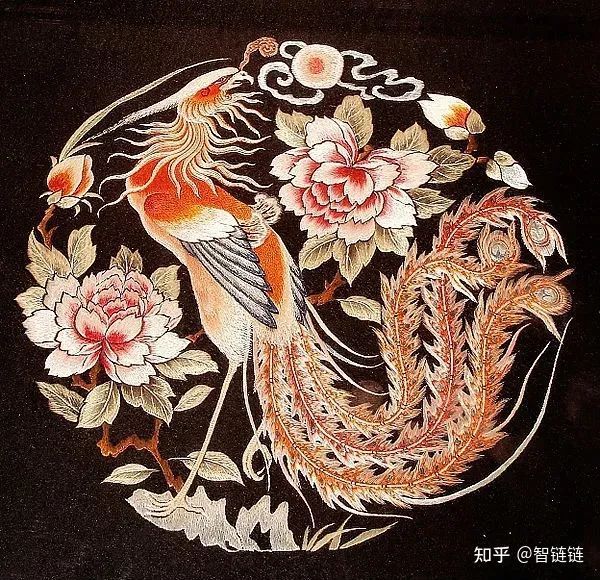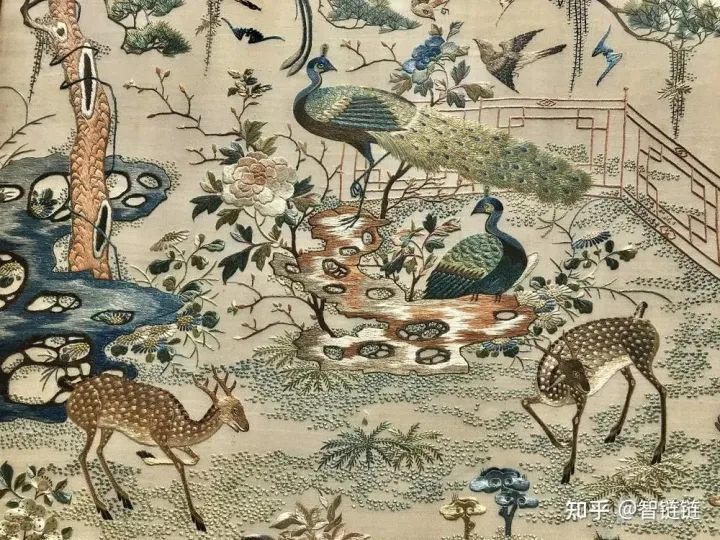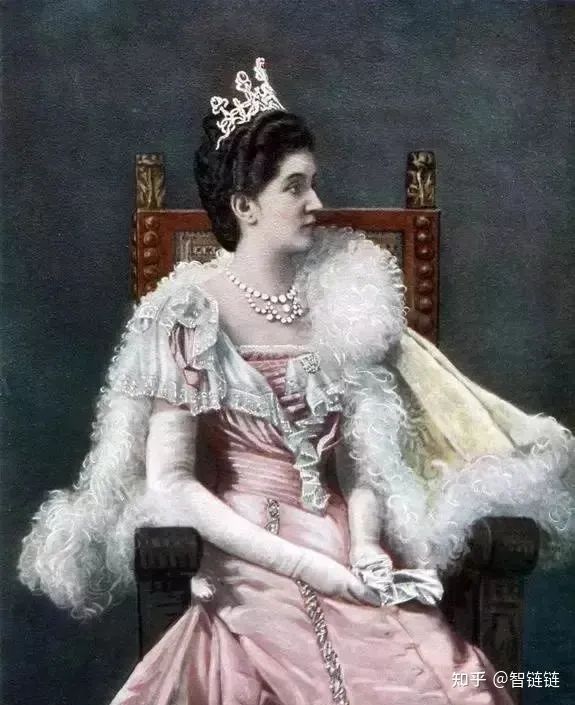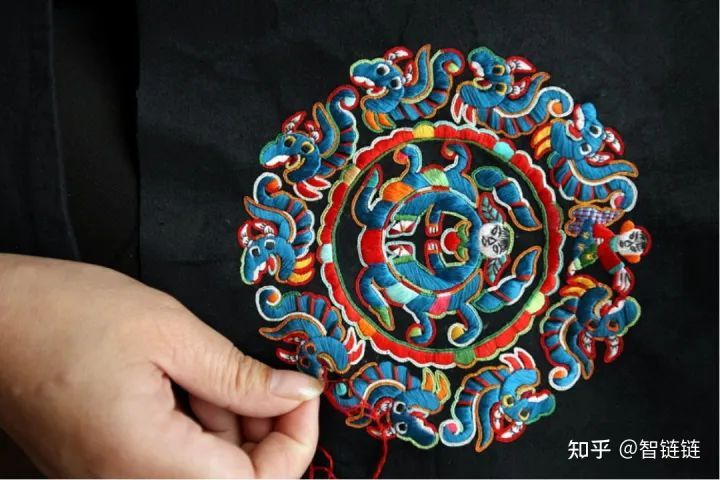The craft of hand embroidery in China began in the time of Yu Shun, flourished in the Tang and Song dynasties, and flourished in the Ming and Qing dynasties. Embroidery has been handed down from generation to generation in Weinan throughout the city. Since the Han Dynasty, embroidery has gradually become the best art in the city, and famous embroiderers have taken their place in the history of art. During the Tang and Song dynasties, embroidery was used for calligraphy, painting and ornaments, and the content of embroidery was related to the needs and customs of life. Li Bai's poem "Emerald golden wisps, embroidered into singing and dancing clothes" and Bai Juyi's "A rich girl in a red building, with golden wisps stabbing her jacket" are all chants of embroidery. The Song Dynasty was a period when hand embroidery reached its peak of development, especially in the creation of purely aesthetic painting embroidery, which was the last of its kind. Embroidery painting was influenced by the paintings of the Academy, and the composition of landscapes, pavilions, birds and figures was simple and vivid, and the coloring was exquisite. During the Ming and Qing dynasties, the palace embroiderers of the feudal dynasties were very large in scale, and folk embroidery was also further developed, producing the "Four Great Embroideries", namely Su embroidery, Xiang embroidery, Shu embroidery and Guangdong embroidery.
Shen Shou, a modern embroidery artist, is not only an excellent embroiderer, but also classifies and organizes the embroidery stitches of the past generations, inherits the traditional techniques of Gu embroidery and Su embroidery, and invokes the expression methods of western sketching, oil painting and photography, creating loose stitches and spinning stitches to express the light and darkness of objects. Her portrait of the Italian Empress Alina was exhibited at the Chinese Arts and Crafts Fair in Turin, Italy, and won the highest award of excellence in the world.
The folk customs and habits provide the opportunity and conditions for folk embroidery to fully demonstrate the hard work and wisdom of women, and in turn, folk embroidery adds a beautiful and mysterious color to the local folk customs and folklore.
Embroidery is the most popular and oldest fashion element, where the simple and skillful hands and beautiful compassionate hearts string together a colorful and rich craft, stitch by stitch. The creativity of the embroiderers of different eras is timeless and long-lasting in their embroideries, and the needle and thread in the hands of the embroiderer are like the brush and ink in the hands of the painter, which can embroider dazzling and exquisite pictures, showing the cultural style and artistic achievements of different eras.
Throughout its long development, traditional Chinese embroidery has evolved into a variety of styles, with techniques refined and expressions enriched. The style of folk embroidery is even more varied, with countless stitches and colorful subjects. The embroideries of ethnic minority regions in particular are not only distinctive in their subject matter and techniques, but also show a strong national personality.
Chinese Miao embroidery, for example, is known as the "high fashion hidden deep in the mountains". The unique technique of Miao embroidery, the bold colors, the exaggerated and vivid patterns, the symmetrical and harmonious composition, and the natural form of the embroidery. It shows the cultural connotation of the Miao people who worship nature, pursue "spirituality" and believe in their ancestors and heroes. The unique cultural connotation of Miao embroidery makes it distinctly different from Chinese embroidery, which is one of the four major forms of embroidery. Miao embroidery art has been in the folds of the mountains for a long time, so few people recognize and appreciate its charm and value. However, truly good art will conquer time and space. As a "meaningful form" and full of "emotional imagery", Miao embroidery will blossom in the near future to be on par with Su, Xiang, Guangdong and Shu embroideries.




Post time: Mar-22-2023

